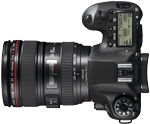Use a Remote Trigger to Get Your Camera Closer to Birds
Even the best blind won’t help you capture certain shots—but that doesn’t mean you have to give up, writes photographer Mac Stone.
When I started out as a wildlife photographer, I couldn’t imagine spending $10,000 on a telephoto lens. I had to find a way to snap great portraits at closer range. My frugality forced me to get creative and make memorable images with the modest kit I already owned.
I turned to remote triggers. Like using a remote to turn on your TV, camera triggers allow photographers to activate the shutter without physically holding the camera. Since I wasn’t there to scare away the animals, I could place the camera closer to my subjects. The only investment required was a small transmitter, a receiver, and a hefty dose of patience.
As I’ve learned in years of documenting conservation issues from remote corners of the world to my home state of Florida, it’s amazing what you can capture when not standing behind the camera. Birds will carry on as if no one were watching, allowing for intimate portraits. My approach to wildlife photography—and the way I saw the world—completely changed. Below are some tips to help you get started with remote triggers.
Choose Your Gear
Today, there are dozens of options for triggering your camera remotely. Most modern DSLR cameras can be operated using a mobile app; the caveat is a limited range of around 15 to 30 feet. For some situations, this might be sufficient, but for most wild animals, you want to remove any human influence. This normally requires a greater working distance, and thus a stronger signal.
I recommend a third-party system. The simplest setups require only two transceivers, one that you hold and manually depress, and another to receive the signal that triggers the camera. These options range anywhere from $30 to $150, and typically the cheapest work just as well as the top-of-the-line models. The downside is that once you set the camera out, you have no control over the settings. More sophisticated and expensive systems, such as the CamRanger Mini ($200), create a robust Wi-Fi hotspot with a several-hundred-foot range and enable your phone or tablet to control camera settings and review each image.
Find a Good Location
The most common way to use a wireless trigger is with wildlife that has somewhat predictable behavior, such as vultures that feed on carcasses or songbirds that come to a feeder. For example, I knew that on Kanapaha Prairie in Gainesville, Florida, a pair of resident Sandhill Cranes have learned they can count on the leavings of birds and squirrels near a bird feeder. The cranes make a stop through my parents’ backyard most afternoons to check the ground for seeds from the morning forage. Instead of waiting in a blind with a long lens for hours, I set my camera out with a wide angle, covered it with some Spanish moss and monitored it from the comfort of the living room, only 100 feet away.
Just remember, in choosing a spot, make sure to follow appropriate ethical considerations. Even without your presence, your camera can still spook wildlife, and setting up next to nests should be avoided unless working with a trained biologist or documenting a very social colony.
